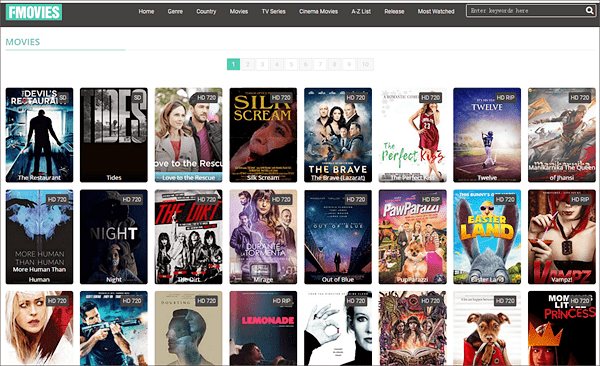How Can Data Mining Help in Generating Leads?
Companies that use data-driven lead generation strategies see a 30% increase in revenue. The credit goes to data mining.
Data mining can be a powerful tool for lead generation, allowing businesses to analyze large amounts of datasets. It helps in identifying patterns and insights that can inform their marketing strategists to make effective and realistic strategies. Here are some ways in which data mining can help in lead generation:
How Data Mining Ensures Generating Leads
Here are a few things that ensure more leads via this knowledge discovery process.
- Identify target demographics
By getting deep into customer data and behavior, businesses can identify the demographics that are most likely to be interested in their product or service. This information can enhance their lead-generation efforts, allowing them to create the exact match targe ting (marketing) messages to the right audience. It will automatically respond to their searches or queries.
- Predictive Analytics
Data mining can be extremely effective to build predictive models that can identify individuals or companies that are most likely to become customers. These models can be based on a wide range of variables, such as past purchasing behavior, social media activity, and other factors. Moreover, this knowledge discovery method can help in seeing the prospective outcome or challenges.
- Improve Lead Scoring
Lead scoring is the process of assigning a score to each potential lead based on their likelihood of becoming a customer. The churned relational data patterns can help businesses improve their lead-scoring models. It can be done by getting deep into the archives of customer data and identifying the characteristics that are most predictive of conversion.
- Personalization
Personalized lead generation campaigns, made possible through data mining, can increase conversion rates by up to 10%. By analyzing customer data, businesses can gain insights into the preferences and behavior of their target audience. This information is adequate to create high-touch experiences via marketing messages, increasing the chances of conversion. Simply put, the data mining methods can help you find customers’ concerns quickly, which you can answer and define connectivity with them.
- Content Marketing
Data mining can be used to identify the types of content that are most likely to resonate with potential customers. This can inform content marketing strategies, helping businesses to create content that is more likely to generate leads.
- Competitive Analysis
Data mining can be used to analyze the marketing strategies and tactics of competitors. This information can help businesses to identify gaps in the market and opportunities for lead generation.
- Cross-selling and Upselling
By analyzing customer data, businesses can identify opportunities for cross-selling and upselling. This can be especially valuable for B2B companies, where existing customers can be an important source of new business.
- Lead Nurturing
Data mining can be used to identify the touchpoints that are most likely to convert leads into customers. This can help businesses to develop more effective lead nurturing campaigns, increasing the chances of conversion.
In essence, this knowledge deriving process can be a valuable tool for lead generation, allowing businesses to analyze large amounts of data to identify insights and opportunities that can inform their marketing strategies. However, it’s important to use data ethically and transparently, ensuring that customer privacy is respected and that data is collected and used in compliance with relevant regulations.
How Does Web Data Mining Work for Generating Leads?
Businesses that use data mining for lead generation are 23 times more likely to acquire customers than those who don’t.
Overall, web data mining is outstanding when it comes to generating leads. It includes analyzing large amounts of data to identify patterns and insights that can inform a business’s marketing strategies. This process involves a few steps. Here are some key steps involved in the data mining process for lead generation:
- Data collection
The first step in data mining is to collect relevant data from various web sources, such as customer databases, social media platforms, and website analytics through web scraping or extraction.
- Data cleaning and preprocessing
The collected datasets need to be cleaned, streamlined, and preprocessed to remove any possibilities of errors, duplicates, or inconsistencies. This ensures that the data is accurate and ready for analysis.
- Data exploration and visualization
For data exploration and visualization, various tools like Tableau can be used to identify patterns and relationships in the data. This helps to uncover insights that can inform lead-generation strategies.
- Predictive modeling
Predictive models can be built or drawn based on the insights gained from the data exploration and visualization process. These models use statistical algorithms to identify the characteristics and behaviors that are most predictive of conversion.
- Lead scoring
Once the predictive model has been developed, it can be used to assign a score to each potential lead based on their likelihood of becoming a customer. This score can be used to prioritize leads, send recommendations, target marketing, and retarget efforts more effectively.
- Personalization
The insights gained from data mining can be used to personalize marketing messages, which eventually increases the chances of conversion. For example, personalized emails or targeted ads can be created based on the interests and preferences of potential leads.
- Lead nurturing
Once leads have been identified, lead nurturing campaigns can be developed to guide them through the sales funnel. The data collected through the data mining process can be used to identify the touchpoints that are most likely to convert leads into customers.
In the nutshell, data mining works to generate leads by using advanced analytics and modeling techniques to identify patterns and insights in large amounts of data. By leveraging these insights, businesses can target their marketing efforts more effectively, increasing the chances of conversion and ultimately driving revenue growth.
Also Read: How Can a Specialist Help in Data Verification?
Summary
Data mining generates leads by analyzing large sets of data to identify patterns and trends that can inform targeted marketing efforts. By using data mining tools to analyze customer behavior and preferences, businesses can identify potential leads and tailor their messaging to increase conversions.






